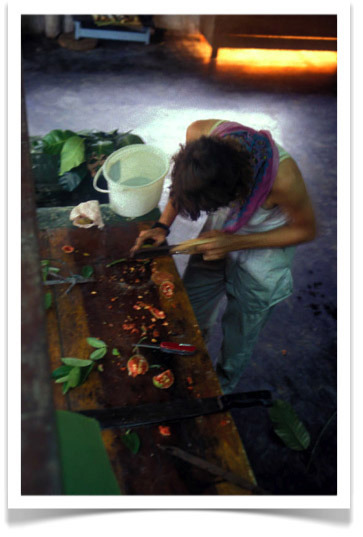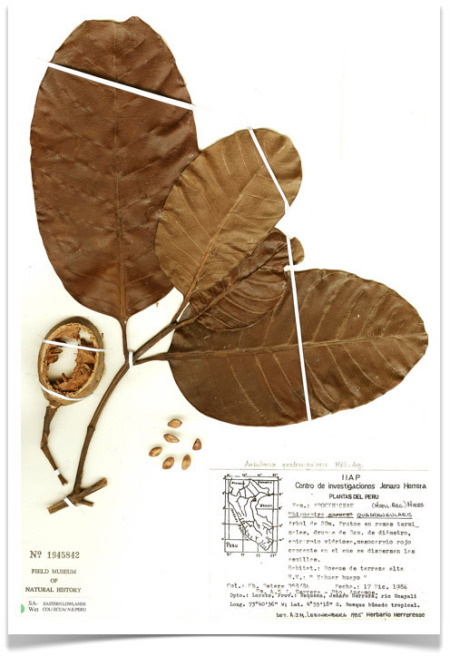Other Week: Day 9
 Friday, May 31, 2013 at 8:27AM
Friday, May 31, 2013 at 8:27AM Original Post: Ledesmo Does Lunch
Date: January 26, 2010 at 10:12 AM

When I was working in the flooded forests of the Rio Ucayali in the mid-1980's (see Umberto Pacaya and Grias Predated), lunch in the field would usually involve fariña (the coarse, toasted meal of cassava), several (large) spoonfuls of sugar, and enough water from the river to get the mixture to the right consistency. Known in Brazil and Peru as "xibe", this simple, midday carbohydrate fix is eaten throughout lowland Amazonia. You mix the whole thing up in the plastic bowl that you brought to the field specifically for this purpose - or you just use your hardhat - and carve a little spoon out of a piece of wood. Ledesmo, one of the field assistants, demonstrates the proper technique for slurping down xibe in the image above. [NOTE: Bunch of things to notice in this photo: the bags of fariña and sugar in the bottom of the boat, the collecting pole (see Herbarium Specimens), the beautiful paddle carved from remo caspi (Aspidosperma excelsum Benth.). Christine and Miguel helped with the spelling of "xibe" - or maybe "xibê" (thx, guys)].












